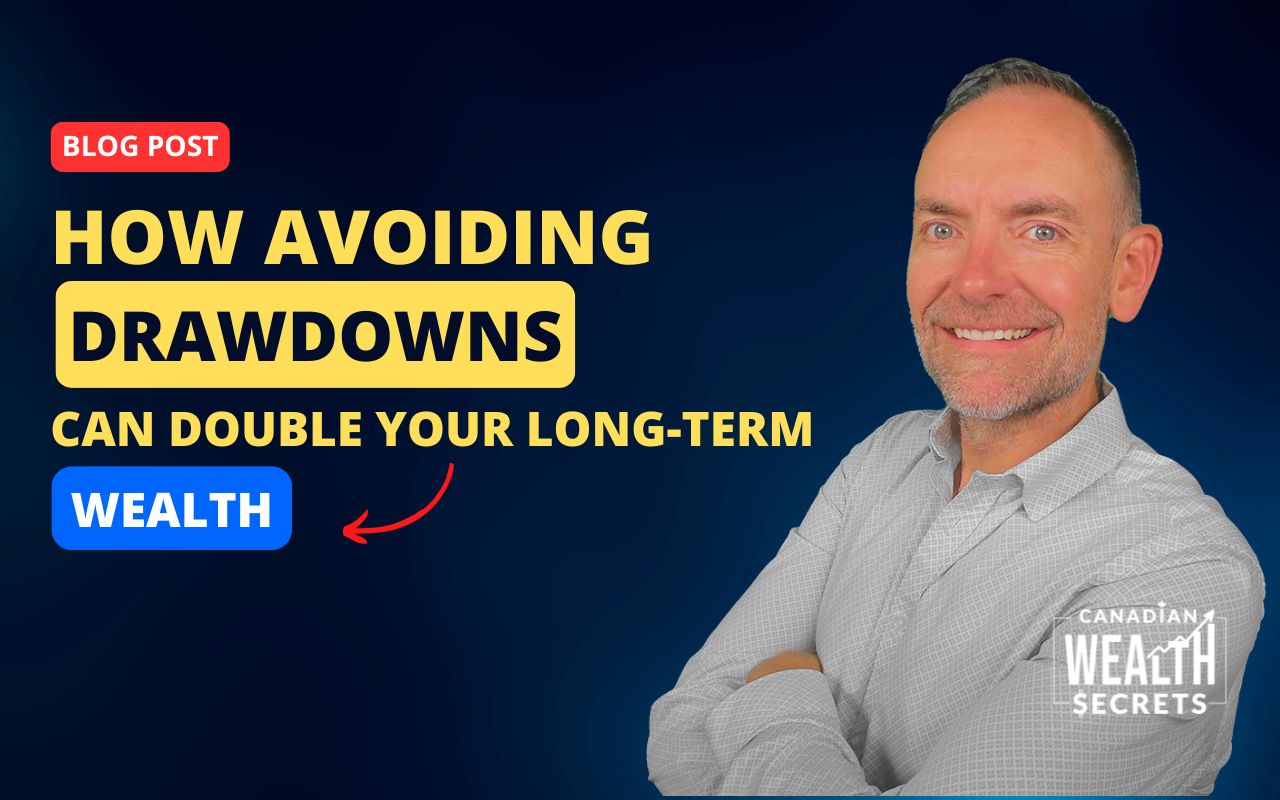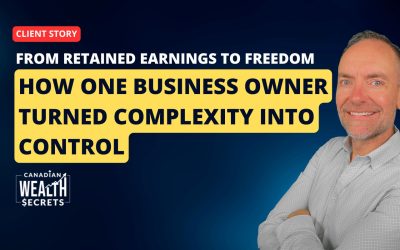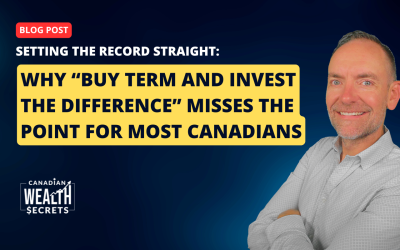If you’ve opened your investment account lately, there’s a good chance your stomach dropped. The S&P 500 is down, portfolios have taken hits, and many Canadian investors are wondering: what now? The truth is, drawdowns are a natural part of market cycles—but the way you handle them can make or break your long-term wealth.
We’re unpacking why managing risk should be your first priority, not chasing the highest returns. We’ll explore how professional investors navigate volatility, why avoiding drawdowns can lead to double the growth over time, and how you can implement a simple rules-based approach in your portfolio.
The Math Behind Market Declines
If your portfolio drops by 30%, you might think a 30% gain will bring you back. Not quite. You’d need a 43% gain just to break even. Drop 36.7%, like the average retail investor in a recent cycle, and you’d need a 58% return to recover. That’s no small feat.
Here’s why it matters: If you can avoid a major drawdown altogether—say by moving to cash or low-risk assets—you could end up with double the portfolio value compared to someone who rode it out. This is data-backed. If you sidestepped the 2008 crash and reinvested a year later, your portfolio today would be twice as large as someone who stayed invested throughout the crash.
Why Most Investors Struggle to Avoid Drawdowns
Let’s be honest: most investors don’t time the market well. Behavioural economics tells us that we tend to exit at the worst possible moment—right near the bottom—and re-enter far too late. That’s why the mantra of “time in the market beats timing the market” exists.
But that doesn’t mean there’s no middle ground. You don’t need a crystal ball—you need a plan.
Risk First, Growth Second: The Pro Investor Mindset
Pro investors obsess over one thing: risk management. Before asking “how much can I make?”, they ask, “how much can I lose?” They focus on protecting capital first and growing it second. That might mean limiting exposure during volatile periods, diversifying globally, or using technical indicators like moving averages to trigger action.
A simple example: if a holding falls below its 50-day moving average and stays there, that might trigger a stop-loss rule. It’s not about catching the bottom or predicting tops—it’s about avoiding catastrophic losses.
DIY Investing? Then You’re the Portfolio Manager Now
If you’re managing your own investments with ETFs or individual stocks, congratulations—you’ve hired yourself. That comes with responsibility. It means:
- Watching for bearish trends
- Setting and sticking to rules (like when to sell)
- Monitoring indicators like the VIX for market volatility
If that sounds like too much, it’s okay. Either accept the risk of full market cycles—or find a professional to help manage it for you.
Set Your Rules or Be Ruled By Emotion
Rules-based investing takes the emotion out of decision-making. You might:
- Only invest when assets are in bullish trends
- Exit positions that fall below key indicators
- Diversify across assets like gold, real estate, or alternative investments
The key? Don’t wing it. Plan it.
Is It Worth It?
Not everyone wants to spend hours analyzing charts. That’s okay. But if you’re serious about optimizing your wealth, especially if you’re a business owner sitting on retained earnings or building a retirement portfolio, then risk management must be part of your strategy.
At Canadian Wealth Secrets, we believe the biggest wealth secret is this: protect first, grow second. That shift alone can set you apart from 90% of investors.
Want to See How It Applies to You?
If you’re a DIY investor or business owner looking to optimize your plan, head to canadianwealthsecrets.com/discovery for a one-on-one session.
Or, if you’re incorporated and want advanced strategies to protect and grow your wealth, explore our free masterclass.
Disclaimer: This content is for educational purposes only and does not constitute financial, legal, or investment advice. Always consult with a qualified advisor before making investment decisions.






